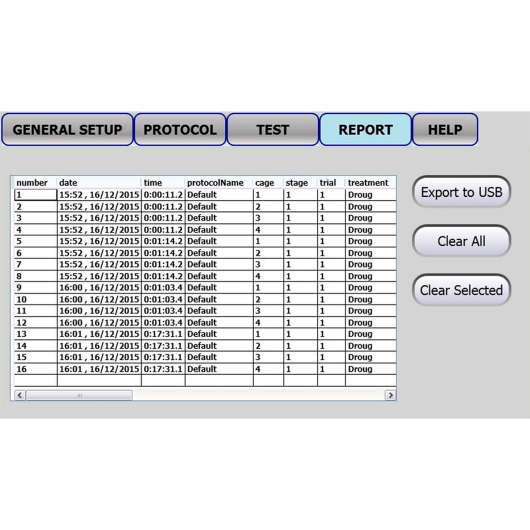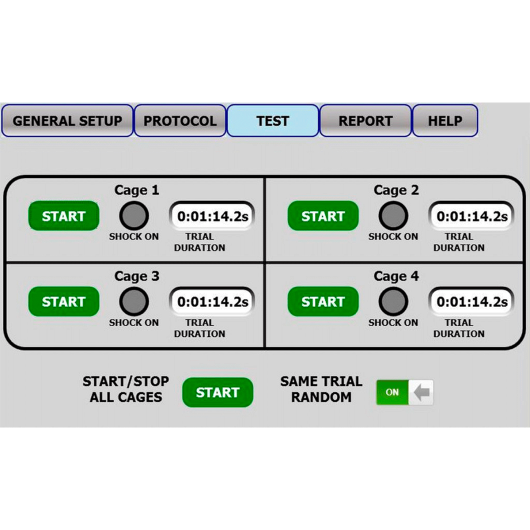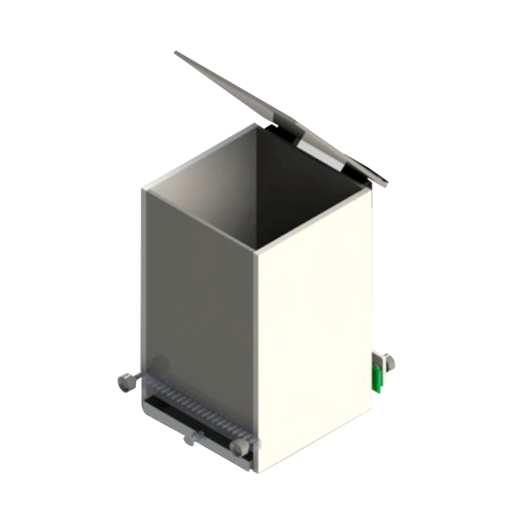




Multiple-cage set-up for learned helplessness
When rodents are exposed to inescapable and unpredictable stress, such as forced swim or inescapable foot shock, they often develop deficits in memory and learning tasks (e.g. Active Avoidance) and they often show analgesic reactions (S.I.A. Stress-Induced Analgesia).
The Ugo Basile Set-Up for Learned Helplessness is based on a sophisticated generator of unpredictable random shocks delivered to the grid floor of a rodent box where no escape is possible. Electric shocks can be randomized in terms of shock length, interval and complex trains can be programmed.
Flexible, easy data collection in Multiple cage set up system for learned helplessness
- A sophisticated generator of unpredictable random shocks delivered to the grid floor of a rodent box (dark isolation cube) – rat and mouse models.
- Easy set up using a 12-inch touch screen controller. Randomize shocks based on time duration as well as intervals between shock events. Schedule a complex train of shock events.
- Up to 4 animals can be controlled simultaneously in 4 independent boxes using one touch screen controller.
- Easy data collection. Includes user-friendly reporting software to collect, visualize and export data into spreadsheets such as Excel.
- Optional expansion box available for multiple cages.
- Part of our expandable Beehive Cage-Manager System. Add, manage and monitor other cages in our range using a single touch screen controller.
Applications of learne helplessness research
Learned helplessness is behavior typical of an organism (human or animal) that has endured repeated painful or otherwise aversive stimuli which it was unable to escape or avoid: American psychologist Martin Seligman initiated research on learned helplessness in 1967 at the University of Pennsylvania as an extension of his interest in depression.
In animal studies, when rodents are exposed to inescapable and unpredictable stress, such as forced swim or inescapable footshock, they often develop deficits in memory and learning tasks (e.g. Active Avoidance), and they often show also analgesic reactions (S.I.A. Stress-Induced Analgesia).
In addition, psychologists have looked at the correlation of depression and anxiety with learned helplessness over the years. It has been shown that the symptoms shown with learned helplessness have corresponding symptoms in depression. The symptoms most felt when depressed are the feelings of helplessness and uncontrollability that have been correlated with learned helplessness.
Helplessness behavior is also studied in social settings: being repeatedly exposed to uncomfortable or painful situations, the person may believe that there is no use in trying to evade such situations. Another example of learned helplessness in social settings involves loneliness and shyness. Those who are extremely shy, passive, anxious and depressed may learn helplessness to offer stable explanations for unpleasant social experiences.
- Endogenous opioids regulate glucocorticoid-dependent stress-coping strategies in mice K. Szklarczyk et alia, Neuroscience 330: 121-137, 2016
- Opioid-Dependent Regulation of High and Low Fear Responses in two Inbred Mouse Strains K. Szklarczyk et alia, Behav. Brain Res 292: 95-101, 2015
- Kademian et alia: “Biphasic effects of adrenal steroid on learned helplessness behavior by inescapable shock” Neuropsychopharmacology 30: 58-66, 2005
- Guilherme dos Santos et alia: “Antidepressive-like effects of electroacupuncture in rats” Physiology & Behavior 93: 155-159, 2008
- S.R. Lourenço Joca et alia: “Activation of post-synaptic 5-HT1A receptors in the dorsal hippocampus prevents learned helplessness development” Brain Research 978 (1-2): 177-184, 2003
- Borsini & Cesana: “Mechanisms of action of flibanserin in the learned helplessness in rats” European Journal of Pharmacology 433: 81-89, 2001
Method Paper
- W.H. Freeman: “Helplessness: On Depression, Development, and Death” ISBN 0-7167-0752-7. (Paperback reprint edition, W.H. Freeman, 1992, ISBN 0-7167-2328-X)
- Grau et alia: “Long-term analgesia and activation of the opiate system” Science 213:1409-1411, 1981





